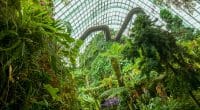The Gishwati-Mukura National Park in Rwanda's Western Province is now part of the World Network of Biosphere Reserves. The park was named a "biosphere reserve" by the United Nations Educational, Scientific and Cultural Organization (UNESCO) on October 28th, 2020.
Rwanda now has two national parks in the World Network of Biosphere Reserves. These are the Volcanoes National Park, classified as a “biosphere reserve” in 1983, and the Gishwati-Mukura National Park. The latter was designated a “biosphere reserve” on October 28th, 2020, during the 32nd session of the International Coordinating Council of the Man and the Biosphere (MAB) Programme, organised by UNESCO (United Nations Educational, Scientific and Cultural Organisation).
Together with Gishwati-Mukura, a total of 24 parks around the world saw their status change on 28 October 2020. The biodiversity area located in the north-west of Rwanda (near Lake Kivu) was rehabilitated and established as a legally protected area in 2016, becoming the 4th national park in this East African country. This work was carried out as part of the LAFREC (Landscape Approach to Forest Restoration and Conservation) project launched in 2015 with the aim of rehabilitating the Gishwati-Mukura Landscape using a landscape approach to better manage forest ecosystems and develop multiple benefits. Scheduled to end in December 2020, the initiative is being implemented by the Rwanda Environment Management Authority (Rema), with support from the Global Environment Facility (GEF) and the Nordic Development Fund (NDF), through the World Bank.
What is changing…
According to Rema, the designation of Gishwati-Mukura National Park as a “biosphere reserve” will improve the conservation and sustainable management of this protected area. The park, consisting of two natural forests, namely Gishwati Forest and Mukura Forest, covers 35.58 km² in the districts of Rutsiro and Ngororero. The natural area is home to oriental chimpanzees, mountain and golden monkeys, servals, genets, civets and small mammals. The designation of Gishwati-Mukura National Park as a “Biosphere Reserve” will also conserve the wide variety of birds (over 120 species), amphibians, reptiles and plants (250 species) of Gishwati-Mukura.
In addition, the biosphere reserve will help to better manage changes and interactions between social and ecological systems, provide local solutions to global challenges and encourage innovations in the conservation and sustainable use of biodiversity. “Surrounding communities will also have the opportunity to produce sustainable biosphere reserve branded products, making them more competitive in the global market,” says Juliet Kabera, Rema’s Director General.
Inès Magoum






